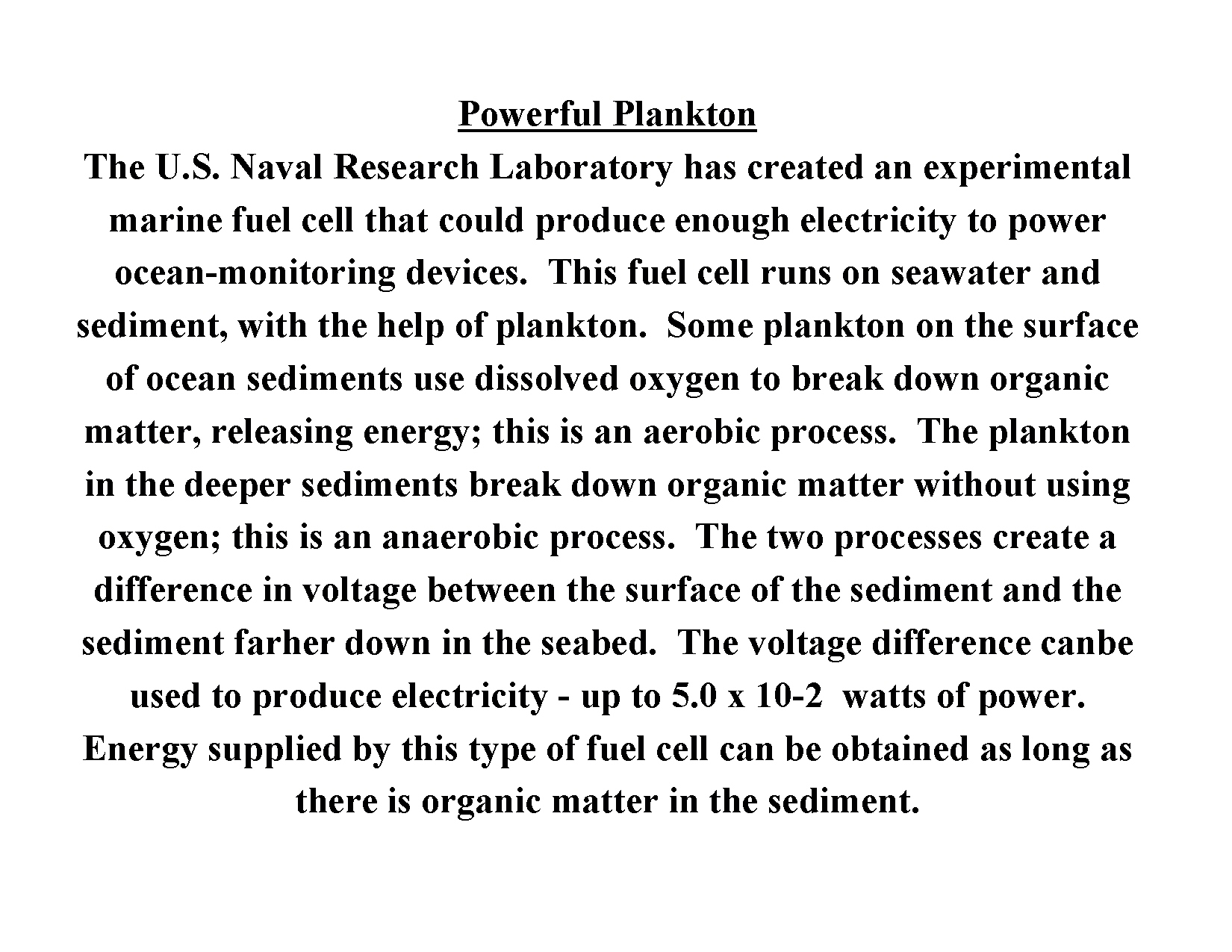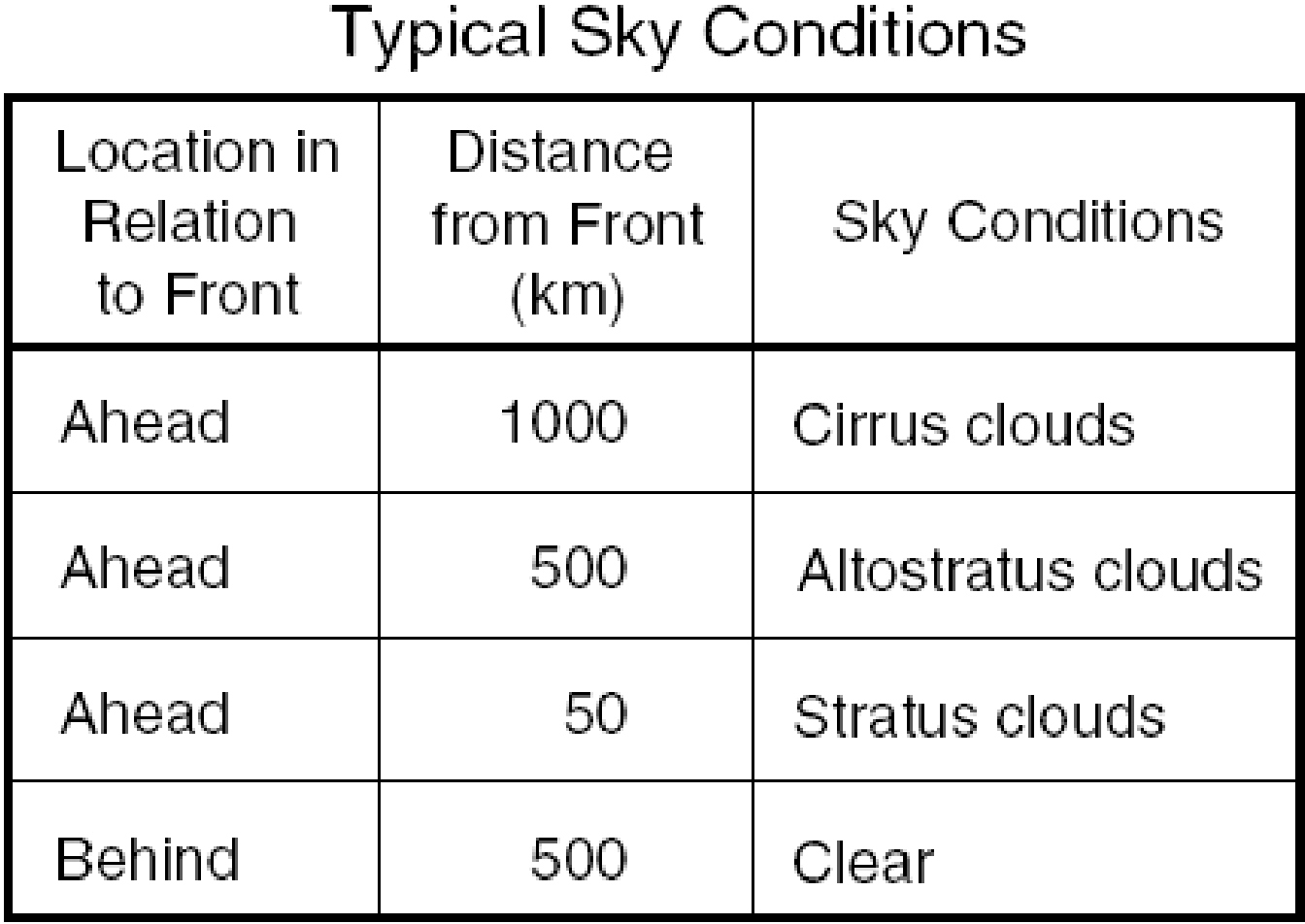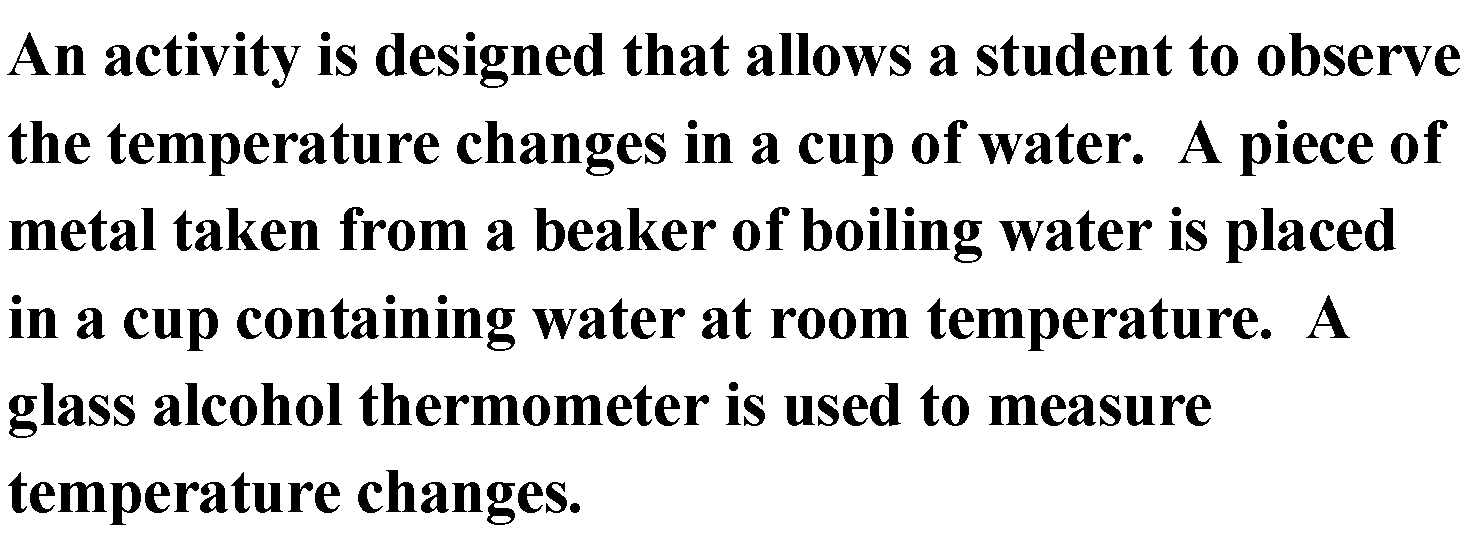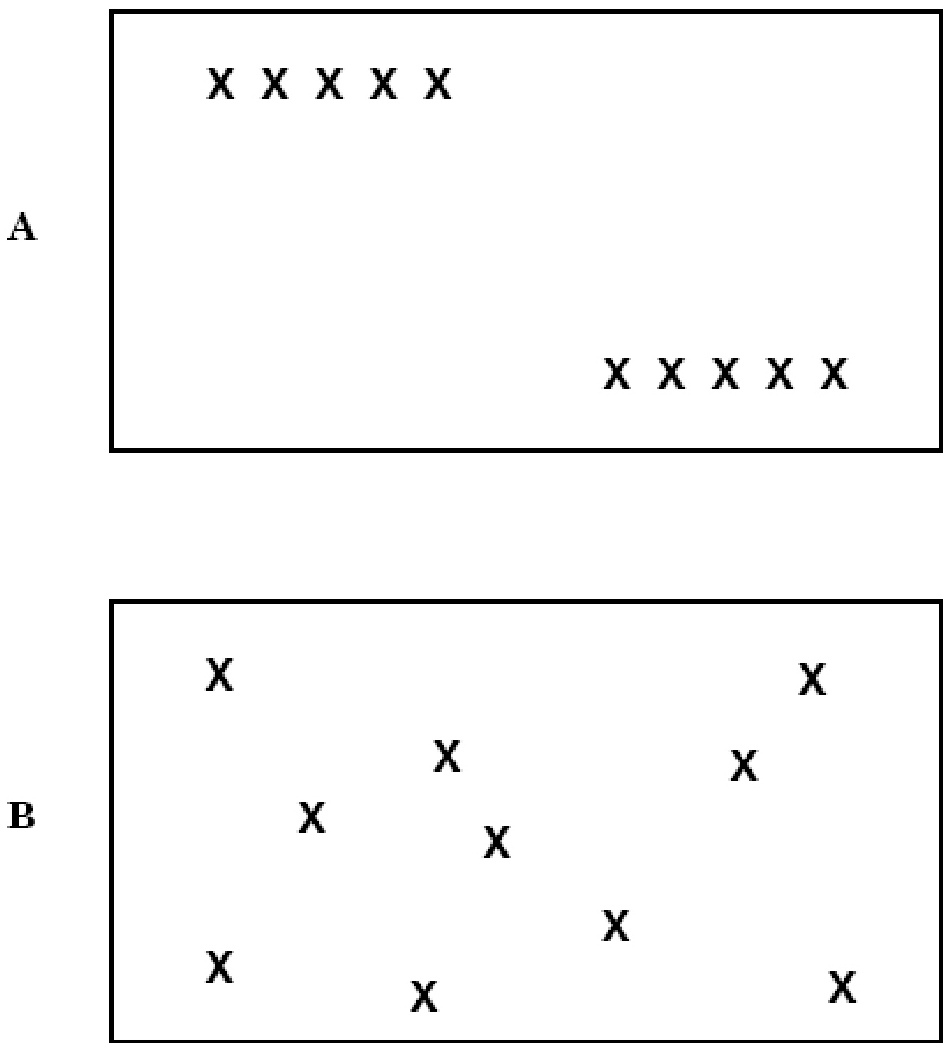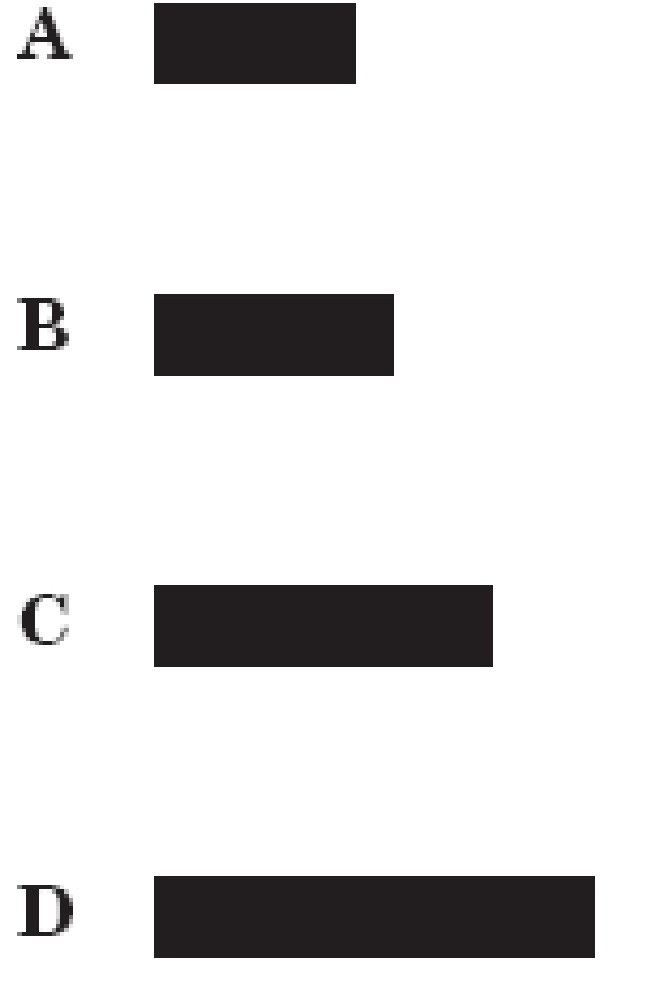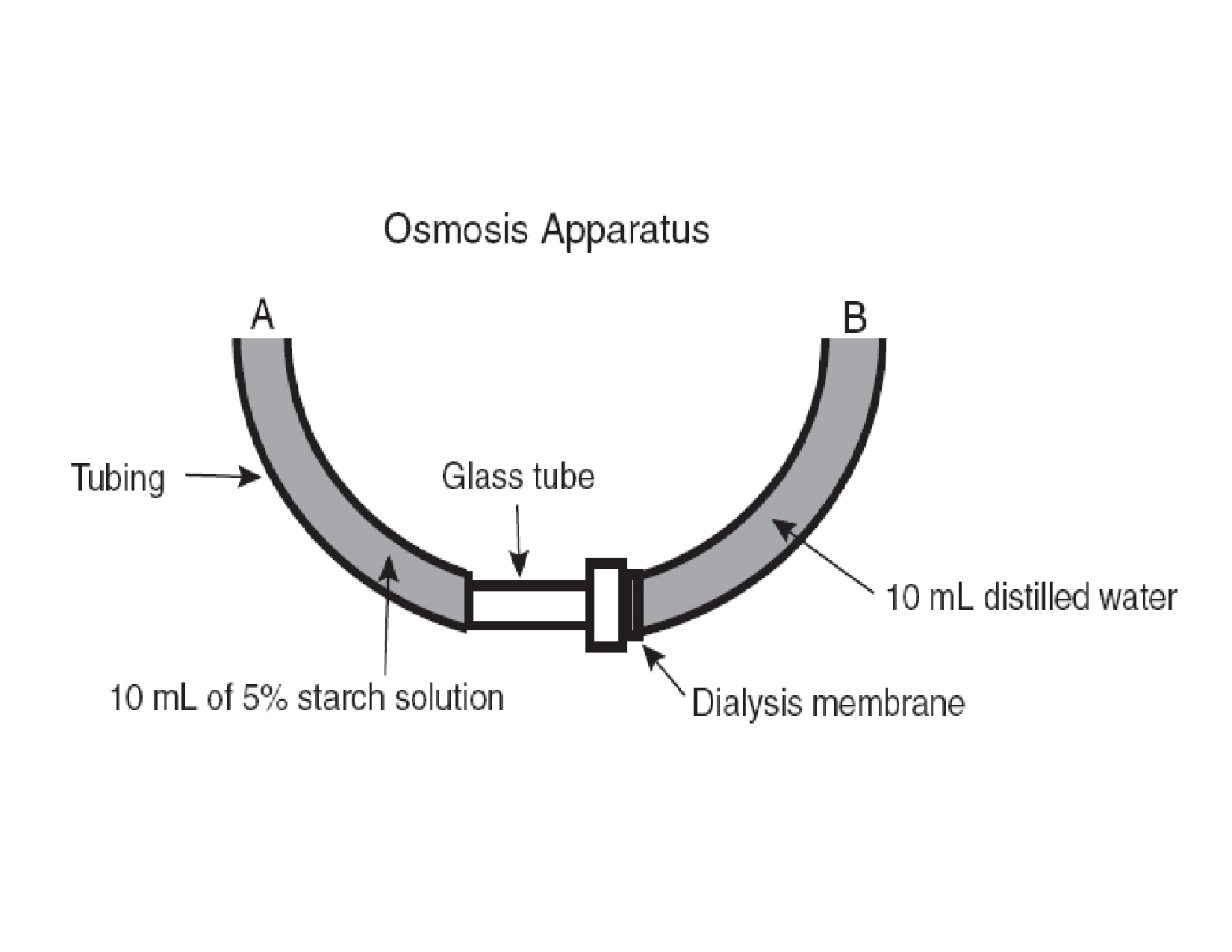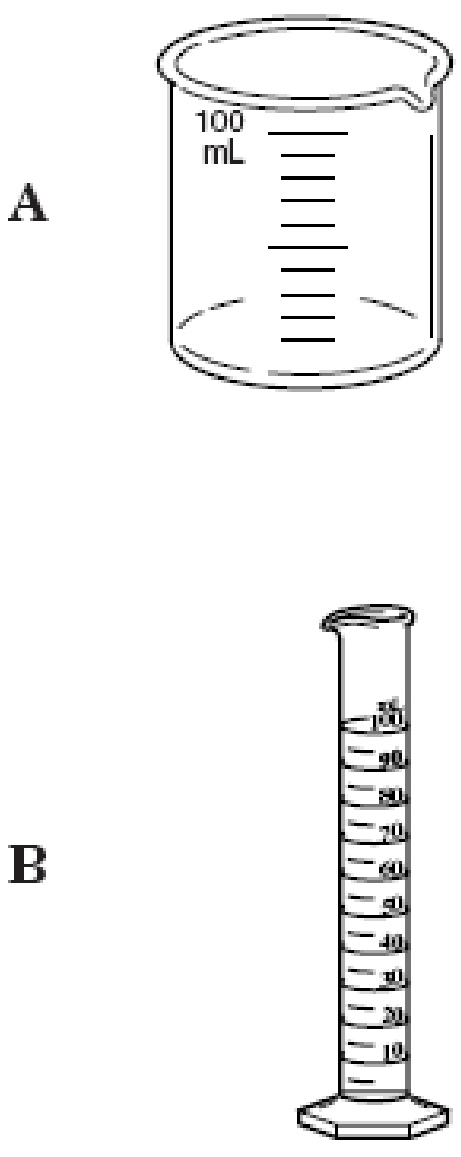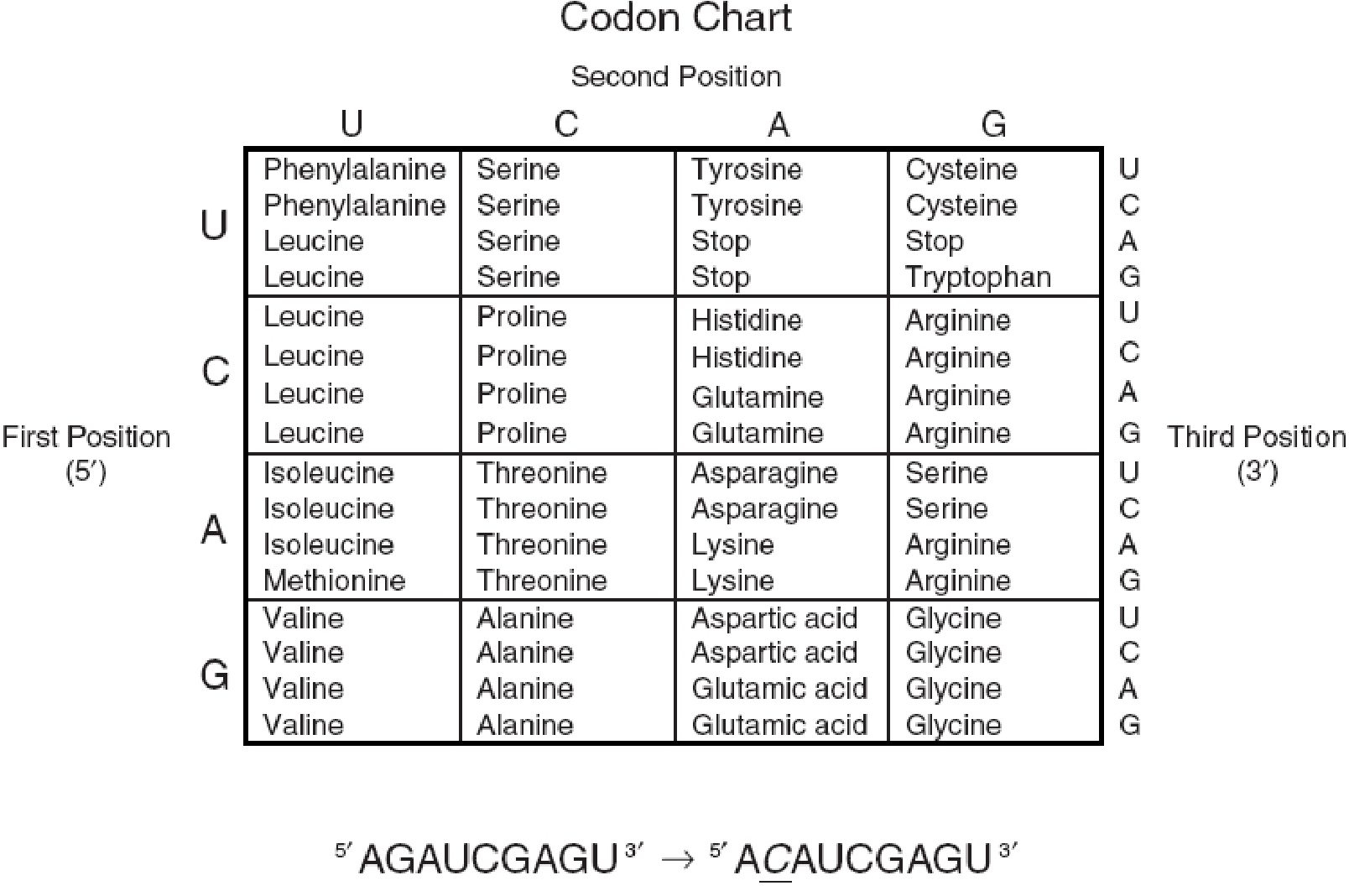Biology Common Assessement # 1
(240).webp)
This Exam will be available until Saturday at 11:55 pm. So that you will be able to view the quiz questions better click Full Screen 1st. Then type in your name and the password for the quiz below and begin. You can only take this quiz 1 time. You must complete the quiz in one setting so be sure to take the quiz when you can spend at least 45 minutes on the quiz. Take your time and answer each question carefully.
The password to get into the Read morequiz is biology.
- 1.
Which of the following organelles is involved in storing materials in a plant cell?
- A.
Mitochondrion
- B.
Vacuole
- C.
Cell Membrane
- D.
Golgi body
Correct Answer
B. VacuoleExplanation
The vacuole is involved in storing materials in a plant cell. It is a membrane-bound organelle that is responsible for storing water, nutrients, and waste products. The vacuole also plays a role in maintaining the turgor pressure and regulating the pH level within the cell. Additionally, it can store pigments and toxins, and in some cases, it can also function in defense against herbivores.Rate this question:
-
- 2.
A segment of nucleic acid is analyzed to see whether it is DNA or RNA. The nucleic acid can be identified as DNA if it contains
- A.
Hydrogen bonds
- B.
Deoxyribose sugars
- C.
Nucleotide bases
- D.
Phosphate groups
Correct Answer
B. Deoxyribose sugarsExplanation
The presence of deoxyribose sugars in the segment of nucleic acid indicates that it is DNA. DNA is composed of nucleotides, which consist of a deoxyribose sugar, a phosphate group, and a nucleotide base. RNA, on the other hand, contains ribose sugars instead of deoxyribose sugars. Therefore, the presence of deoxyribose sugars is a characteristic feature of DNA and allows for its identification.Rate this question:
-
- 3.
During photosynthesis hydrogen combines with carbon dioxide to make
- A.
Protein
- B.
Cellulose
- C.
Cholesterol
- D.
Glucose
Correct Answer
D. GlucoseExplanation
During photosynthesis, plants use energy from sunlight to convert carbon dioxide and water into glucose. Glucose is a simple sugar that serves as the primary source of energy for plants. It can be used immediately or stored as starch for later use. Glucose is also a building block for other important molecules such as cellulose, which forms the cell walls of plants. Therefore, the correct answer is glucose.Rate this question:
-
- 4.
Potential Hazards of Petroleum Naphtha, Hexane, Toluene, and AcetoneQuestion:The Ingredients described above are used to make a bonding agent. The most important safety precaution to take when applying this bonding agent is to
- A.
Work in a well - ventilated area
- B.
Wear a lab coat
- C.
Dry it with a small flame
- D.
Cover the work area with newspaper
Correct Answer
A. Work in a well - ventilated areaExplanation
The potential hazards of petroleum naphtha, hexane, toluene, and acetone suggest that these ingredients may release harmful fumes or vapors when used as a bonding agent. Working in a well-ventilated area is important as it helps to disperse these fumes and reduce the risk of inhalation. This precaution ensures the safety of the person applying the bonding agent by minimizing their exposure to potentially harmful chemicals.Rate this question:
-
- 5.
Which lab setup would be appropriate to use in heating 100 mL of water to boiling point?
- A.
A thermal coil inside a 100 mL cylinder
- B.
A 10 mL test tube held above a Bunsen burner
- C.
A 200 mL beaker placed on a hot plate
- D.
A sealed 300 mL flask in a warm - water bath
Correct Answer
C. A 200 mL beaker placed on a hot plateExplanation
A 200 mL beaker placed on a hot plate would be appropriate for heating 100 mL of water to boiling point. The beaker has a larger capacity than the volume of water being heated, allowing room for expansion. The hot plate provides a controlled and consistent source of heat, ensuring that the water can reach its boiling point. Additionally, the beaker allows for easy observation and stirring of the water during the heating process.Rate this question:
-
- 6.
Which of the following procedures should be used in finding the mass of crystals?
- A.
Pour wastes down the sink with plenty of water
- B.
Pour the excess crystals back into the original container
- C.
Put the crystals on the outer part of the balance pan for massing
- D.
Use weighing paper on the balance pan
Correct Answer
D. Use weighing paper on the balance panExplanation
To find the mass of crystals, it is important to use weighing paper on the balance pan. Weighing paper provides a clean and stable surface for placing the crystals, ensuring accurate measurement of their mass. Pouring wastes down the sink, pouring excess crystals back into the original container, or placing the crystals on the outer part of the balance pan are irrelevant and incorrect procedures for determining the mass of crystals.Rate this question:
-
- 7.
Food provides the human body with all of the following except
- A.
Lipids
- B.
Hydrochloric Acid
- C.
Amino acid
- D.
Calories
Correct Answer
B. Hydrochloric AcidExplanation
Hydrochloric acid is not provided by food. It is a strong acid that is naturally produced in the stomach to aid in the digestion of food. However, lipids, amino acids, and calories are all provided by food. Lipids are a type of fat that is essential for energy storage and hormone production. Amino acids are the building blocks of proteins, which are necessary for growth and repair in the body. Calories are a unit of energy that is obtained from food and used by the body for various metabolic processes.Rate this question:
-
- 8.
DNA molecules separate into single stands, which are then used to construct two identical stands of DNA. This process ensures that the
- A.
Daughter cells are genetically identical to the parent cells
- B.
Parent cells use little ATP
- C.
Cytoplasm is in equilibrium
- D.
Mitochondria are genetically identical to the chloroplasts
Correct Answer
A. Daughter cells are genetically identical to the parent cellsExplanation
During DNA replication, the DNA molecule unwinds and separates into two single strands. Each single strand serves as a template for the synthesis of a new complementary strand, resulting in two identical DNA molecules. This ensures that the daughter cells produced during cell division inherit the same genetic information as the parent cells.Rate this question:
-
- 9.
Question:Which safety precaution should be observed while analyzing sediment from a marine aquarium?
- A.
Avoid using glassware
- B.
Use a fume hood
- C.
Wear rubber gloves
- D.
Have a fire extinguisher nearby
Correct Answer
C. Wear rubber glovesExplanation
When analyzing sediment from a marine aquarium, it is important to wear rubber gloves as a safety precaution. This is because the sediment may contain harmful substances or bacteria that can be harmful to the skin. By wearing rubber gloves, it helps to protect the hands from any potential hazards or contamination.Rate this question:
-
- 10.
In experiments, a benefit of larger sample sizes would be more
- A.
Control groups
- B.
Time per group
- C.
Variables
- D.
Representative data
Correct Answer
D. Representative dataExplanation
A larger sample size in experiments would provide more representative data. Representative data is important because it accurately reflects the characteristics and diversity of the population being studied. With a larger sample size, there is a higher chance of including a wide range of individuals, which helps to reduce bias and increase the generalizability of the findings. This allows researchers to draw more reliable conclusions and make accurate predictions about the larger population.Rate this question:
-
- 11.
Use both the chart and graph above to help you answer the question below.Question:The cloud conditions above are typical of locations near a warm front. According to these data, what are the most likely sky conditions for Waco?
- A.
Altostratus clouds
- B.
Stratus clouds
- C.
Cirrus clouds
- D.
Clear skies
Correct Answer
A. Altostratus cloudsExplanation
Based on the chart and graph provided, the cloud cover in Waco is consistently high throughout the day, with cloud cover percentages ranging from around 70% to 100%. This suggests that there are likely to be clouds present in the sky. Additionally, the cloud type that is associated with warm fronts is altostratus clouds, which are mid-level, grayish clouds that often cover the entire sky. Therefore, based on the data and the characteristics of warm fronts, the most likely sky conditions for Waco would be altostratus clouds.Rate this question:
-
- 12.
3' AATCGC 5'Which of the following nucleotide base sequences complements the section of DNA modeled above?
- A.
5' TTUCGC 3'
- B.
5' GCGATT 3'
- C.
5' TTAGCG 3'
- D.
5' UTCGCA 3'
Correct Answer
C. 5' TTAGCG 3'Explanation
The given DNA sequence is AATCGC. In DNA, adenine (A) pairs with thymine (T), and cytosine (C) pairs with guanine (G). Therefore, to find the complement, we need to find the nucleotides that would pair with each nucleotide in the given sequence. The complement of A is T, the complement of T is A, the complement of C is G, and the complement of G is C. Therefore, the nucleotide base sequence that complements AATCGC is TTAGCG.Rate this question:
-
- 13.
A safety checklist for this activity should include the presence of a proper fire extinguisher and all the following items except a
- A.
Receptacle for broken glass
- B.
Squeeze bottle
- C.
Fire blanket
- D.
Laboratory apron
Correct Answer
B. Squeeze bottleExplanation
A safety checklist for this activity should include the presence of a proper fire extinguisher, a receptacle for broken glass, a fire blanket, and a laboratory apron. However, a squeeze bottle is not necessary for this activity as it is not mentioned as a required item for safety.Rate this question:
-
- 14.
The following boxes represent a field. Which pattern for collecting 10 samples would provide the best data for identifying the types of plants in a field ?
- A.
A
- B.
B
- C.
C
- D.
D
Correct Answer
B. BExplanation
Collecting samples in pattern B would provide the best data for identifying the types of plants in a field because it covers a larger area and includes a variety of locations within the field. This pattern ensures that the samples are taken from different parts of the field, increasing the likelihood of capturing the diversity of plant types present.Rate this question:
-
- 15.
The reason for wafting or fanning a small amount of chemical vapors toward the nose as a means to detect odors in a test tube is to
- A.
Protect the respiratory tract against potentially harmful vapors
- B.
Avoid splashing chemicals into the face of any person
- C.
Determine the relative strength of the odor before smelling directly
- D.
Avoid experimental error from excessive loss of mass of reactants or products
Correct Answer
A. Protect the respiratory tract against potentially harmful vaporsExplanation
Wafting or fanning chemical vapors toward the nose helps to protect the respiratory tract against potentially harmful vapors. By gently moving the vapors towards the nose, it allows for a controlled and diluted exposure to the odor, reducing the risk of inhaling a concentrated or harmful amount of the chemicals. This method ensures the safety of the experimenter by minimizing the direct inhalation of potentially dangerous vapors.Rate this question:
-
- 16.
Which of these is a hypothesis that can be tested through experimentation?
- A.
A fish's ability to taste food is affected by the clarity of aquarium water.
- B.
Tadpoles' fear of carnivorous insect larvae increases as the tadpoles age.
- C.
Bacterial growth increases exponentially as temperature increases
- D.
The number of times a dog wags its tail indicates how content the dog is
Correct Answer
C. Bacterial growth increases exponentially as temperature increasesExplanation
The hypothesis that can be tested through experimentation is "Bacterial growth increases exponentially as temperature increases." This hypothesis can be tested by conducting experiments where bacterial growth is measured at different temperatures to determine if there is a relationship between temperature and growth rate. By manipulating the temperature and measuring the growth, scientists can gather data to support or refute this hypothesis.Rate this question:
-
- 17.
Which of the following shows the length of a rubber strip measured precisely to 2.22 centimeters?
- A.
A
- B.
B
- C.
C
- D.
D
Correct Answer
D. DExplanation
Option D shows the length of a rubber strip measured precisely to 2.22 centimeters.Rate this question:
-
- 18.
Question:Which would most likely cause the liquid in Tube A to rise?
- A.
Solute in the tubes changing from higher temperature to a lower temperature
- B.
Water passing form a region of lower starch concentration to a higher starch concentration
- C.
Start concentrations being equal on each side of the membrane
- D.
Water and starch volumes being the same
Correct Answer
B. Water passing form a region of lower starch concentration to a higher starch concentrationExplanation
When water passes from a region of lower starch concentration to a higher starch concentration, it creates a concentration gradient. This causes osmosis to occur, where water moves from an area of low solute concentration (lower starch concentration) to an area of high solute concentration (higher starch concentration). As a result, the liquid in Tube A would rise.Rate this question:
-
- 19.
In DNA, which of the following determines the traits of an organism?
- A.
Strength of hydrogen bonds
- B.
Amount of adenine
- C.
Sequence of nitrogen bases
- D.
Number of sugars
Correct Answer
C. Sequence of nitrogen basesExplanation
The traits of an organism are determined by the sequence of nitrogen bases in DNA. The sequence of nitrogen bases, which includes adenine, thymine, cytosine, and guanine, forms the genetic code that carries the instructions for building and functioning of an organism. The specific arrangement of these bases determines the order of amino acids in proteins, which ultimately determines the traits and characteristics of an organism.Rate this question:
-
- 20.
Laboratory equipment is cleaned and properly stored after use primarily so that
- A.
The possibility of contamination in the laboratory is minimized
- B.
Chemical products can be measured and recorded as data
- C.
Toxic materials can be kept in the laboratory
- D.
Time is saved in setting up the next experiment
Correct Answer
A. The possibility of contamination in the laboratory is minimizedExplanation
Laboratory equipment is cleaned and properly stored after use primarily so that the possibility of contamination in the laboratory is minimized. This is important because contamination can lead to inaccurate results and compromised experiments. By cleaning and storing the equipment properly, the risk of cross-contamination between different experiments or samples is reduced, ensuring the integrity of the scientific process. It also helps maintain a safe and hygienic working environment for researchers and prevents the spread of potentially harmful substances.Rate this question:
-
- 21.
Which of the following pieces of equipment would be most appropriate for measuring the volume of a marble?
- A.
A
- B.
B
- C.
C
- D.
D
Correct Answer
B. BExplanation
Equipment B would be most appropriate for measuring the volume of a marble because it appears to be a graduated cylinder. Graduated cylinders are commonly used for measuring the volume of liquids, but they can also be used to measure the volume of solid objects by displacement. By placing the marble in the graduated cylinder and measuring the change in liquid level, the volume of the marble can be determined accurately.Rate this question:
-
- 22.
Which of the following will allow measurement of a liquid's volume with the greatest precision?
- A.
50 mL cylinder graduated in 1 mL increments
- B.
100 mL cylinder graduated in 1 mL increments
- C.
100 mL cylinder graduated in 0.5 mL increments
- D.
200 mL cylinder graduated in 5 mL increments
Correct Answer
B. 100 mL cylinder graduated in 1 mL incrementsExplanation
A 100 mL cylinder graduated in 1 mL increments will allow for the greatest precision in measuring a liquid's volume. This is because the smaller the increment, the more accurately the volume can be measured. A 1 mL increment will provide more precise measurements compared to a 0.5 mL increment or a 5 mL increment. Additionally, a 100 mL cylinder is more suitable for measuring smaller volumes compared to a 200 mL cylinder.Rate this question:
-
- 23.
Energy conversion within an animal cell would be severely limited by removal of the cell's
- A.
Chloroplasts
- B.
Lysosomes
- C.
Plastids
- D.
Mitochondria
Correct Answer
D. MitochondriaExplanation
Mitochondria are known as the powerhouses of the cell because they are responsible for converting nutrients into energy in the form of ATP through cellular respiration. Without mitochondria, an animal cell would not be able to produce enough energy to carry out essential cellular functions. Therefore, the removal of mitochondria would severely limit energy conversion within an animal cell. Chloroplasts, lysosomes, and plastids are not directly involved in energy conversion and their removal would not have as significant an impact on cellular energy production.Rate this question:
-
- 24.
Objects of the same mass but of different sizes and shapes were dropped from a given height. Their rates of free fall were measured and recorded. Which of the following is most likely the question this experiment was designed to answer?
- A.
How does height affect the force of gravity?
- B.
How do size and shape affect an object's rate of free fall?
- C.
How do mass and weight affect falling objects?
- D.
How does gravity affect objects of different densities?
Correct Answer
B. How do size and shape affect an object's rate of free fall?Explanation
The experiment involved objects of the same mass but different sizes and shapes being dropped from a given height. The purpose of measuring and recording their rates of free fall was to determine how size and shape affect an object's rate of free fall. By observing how different sizes and shapes of objects fall at different rates, the experiment aimed to understand the relationship between these variables and the object's rate of free fall.Rate this question:
-
- 25.
The chain above represents three codons. Which of the following changes would be expected in the amino acid if the mutation shown above occurred?
- A.
The identities of more than one amino acid would change
- B.
The amino acid sequence would remain unchanged
- C.
The amino acid sequence would be shorter than expected
- D.
The identity of one amino acid would change.
Correct Answer
D. The identity of one amino acid would change.Explanation
If the mutation shown above occurred, the identity of one amino acid would change. This is because a mutation in the DNA sequence can lead to a change in the corresponding mRNA sequence, which in turn can result in a different amino acid being incorporated into the protein during translation. Since the question states that the chain represents three codons, it suggests that the mutation affects only one codon, resulting in a change in the identity of one amino acid in the protein sequence.Rate this question:
-
Quiz Review Timeline +
Our quizzes are rigorously reviewed, monitored and continuously updated by our expert board to maintain accuracy, relevance, and timeliness.
-
Current Version
-
Apr 12, 2024Quiz Edited by
ProProfs Editorial Team -
Dec 18, 2008Quiz Created by
Kpaxton
- Aeronautics Quizzes
- Aerospace Quizzes
- Agricultural Science Quizzes
- Astrology Quizzes
- Astronomy Quizzes
- Atom Quizzes
- Biochemistry Quizzes
- Biomechanics Quizzes
- Biostatistics Quizzes
- Biotechnology Quizzes
- Botany Quizzes
- Branches Of Science Quizzes
- Chemistry Quizzes
- Cytology Quizzes
- Easy Science Quizzes
- Ecology Quizzes
- Electrical Quizzes
- Embryology Quizzes
- Endocrinology Quizzes
- Engineering Quizzes
- Environmental Science Quizzes
- Epidemiology Quizzes
- Experiment Quizzes
- Forestry Quizzes
- Fossil Quizzes
- Gas Quizzes
- General Science Quizzes
- Genetics Quizzes
- Histology Quizzes
- Human Biology Quizzes
- Integrated Science Quizzes
- Invention Quizzes
- Library Science Quizzes
- Lighting Quizzes
- Liquid Quizzes
- Marine Biology Quizzes
- Microbiology Quizzes
- Molecular Biology Quizzes
- Nature Quizzes
- Neuroscience Quizzes
- Nuclear Science Quizzes
- Oceanography Quizzes
- Physics Quizzes
- Psychology Quizzes
- Science And Technology Quizzes
- Science Glossary Quizzes
- Science Knowledge Quizzes
- Science Practice Quizzes
- Scientific Method Quizzes
- Scientific Notation Quizzes
- Soil Science Quizzes
- Solar System Quizzes
- Solid Quizzes
- Zoology Quizzes
 Back to top
Back to top




